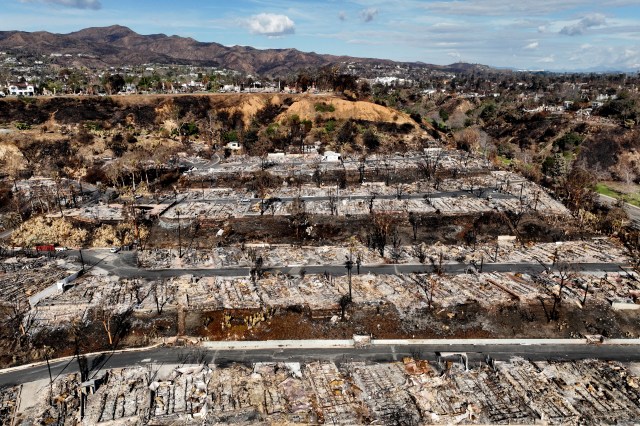
Real estate losses from the devastating Palisades and Eaton wildfires could exceed $30 billion, according to a new analysis by the Los Angeles Times. The newspaper compared estimated property value…
Adam Carolla’s Returns to Malibu
Random Nature of Fire Damage:
The Malibu fire caused wildly inconsistent damage, with some homes completely destroyed while others immediately adjacent remained untouched. This was observed even between homes with similar construction.
- Construction Material Impact: The presence of steel significantly improved a home’s chances of survival, while wood and cedar shingle structures were more vulnerable. Even with significant steel framing, intense heat could still cause exterior damage.
- High-Value Property Loss: The destroyed homes were frequently high-end, costing tens of millions of dollars, raising questions about insurance coverage and the extent of the financial losses.
- Extensive Cleanup and Reconstruction Challenges: The cleanup process is expected to be lengthy and costly, with significant bureaucratic hurdles, especially regarding septic systems and coastal regulations. Many homes will require costly upgrades to septic systems and seawalls to meet modern building codes, potentially adding millions of dollars to reconstruction costs.
- Unexpected Survivors: Several seemingly vulnerable structures, including a beach club with a wooden pergola, survived, highlighting the unpredictable nature of the fire’s spread.
- Long-Term Impact on Infrastructure: The fire’s damage to infrastructure, including telephone poles, requires repair and presents an opportunity to upgrade systems (although this was not immediately undertaken).
- Emotional Toll (Indirect): While the narrator claims to lack emotion, the experience is described as emotionally jarring for those affected, given the scale of destruction and the randomness of the damage.


